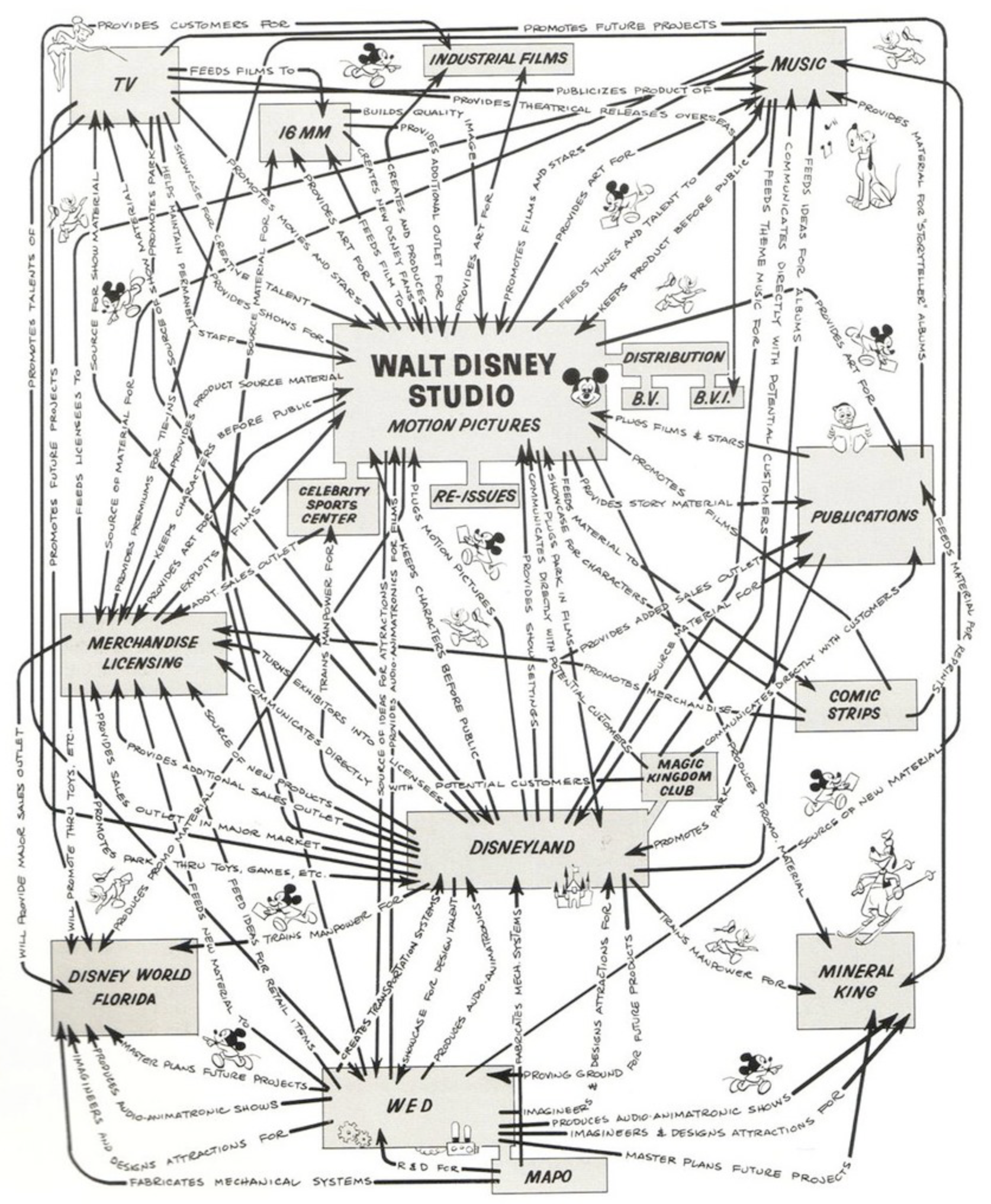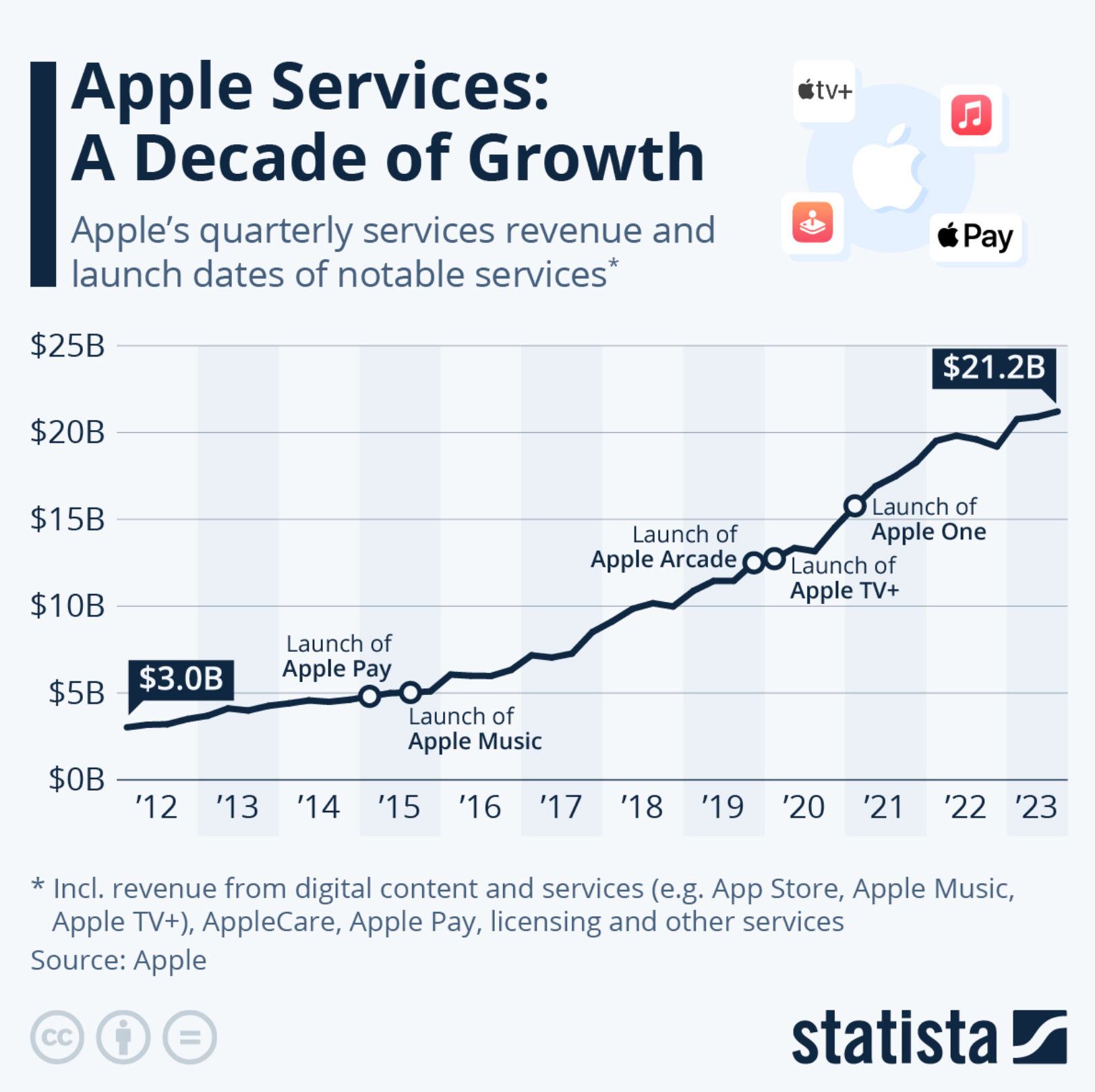When Disney theorized business synergy

There's an organizational chart from the sixties that has been floating around for a long time. It describes how Disney was thinking about its business more than fifty years ago, and it's striking. Where you might see a consulted mess, it's anything but. The chart is a methodological nest that aims to capture consumers' attention (and dollars) with different offers, formats, experiences, and merchandise that all flow together. Watch a movie with your kids, go to the park for summer, see the characters, and don't forget to buy the plushes on your way out:

If maximizing the value of your content with a multi-layered strategy wasn't born with the internet or "digital," it's clearly even more effective today as consumer touchpoints have been exponentially developed.
This is something that companies like Apple understand very well. And while analysts are still discussing how much % of sales the MacBook is increasing or dropping to the fifth decimal, Apple has built one of the most synergetic businesses on the planet.

As I've been having this discussion since... 2014, I can testify that it's something that remains difficult to grasp as the halo effect of the product is so blinding.
If you want to follow up on this idea, here's a first three-steps approach that we've been using for years with many corporate customers:





